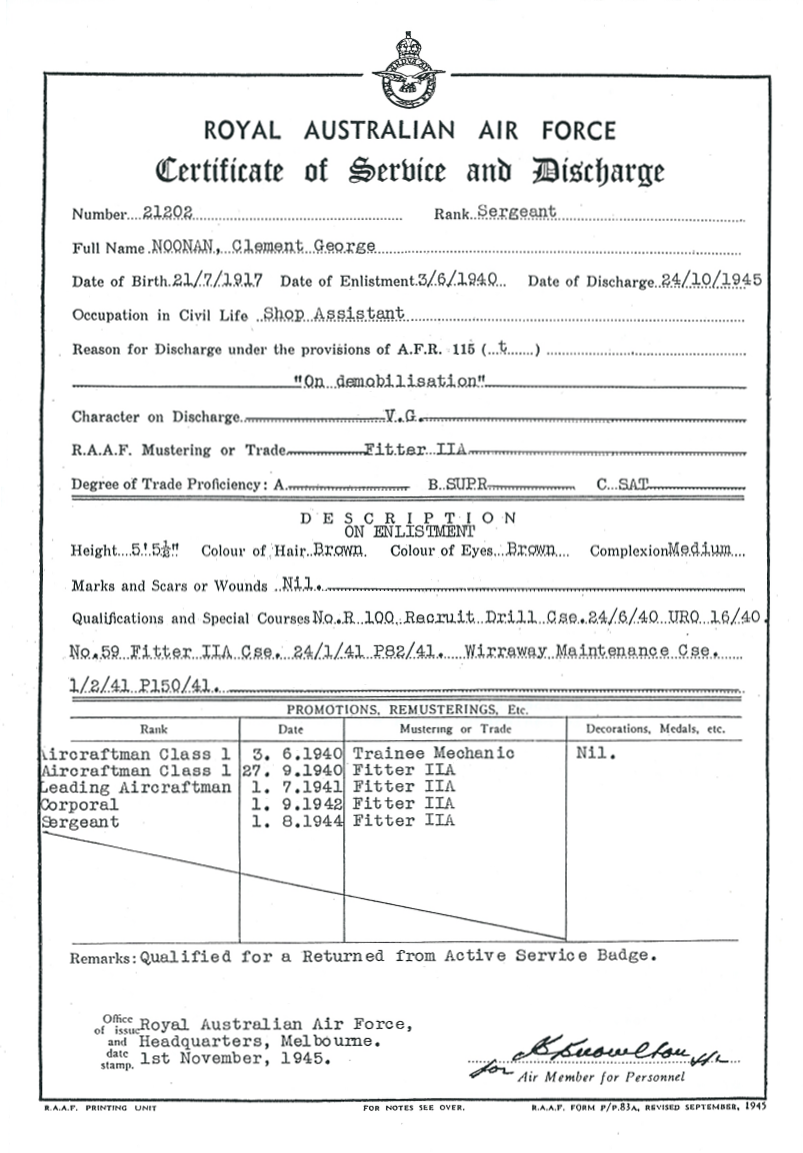No. 5 Aircraft Depot (5 AD) Wagga Wagga 8 months
No. 5 Aircraft Depot RAAF was formed on 23 March 1942 at RAAF Station Forest Hill near Wagga Wagga, New South Wales. Clem served with 5 AD on his return from service abroad (13 February 1944 to 23 October 1945). It was his last service posting.
5 AD handled the major maintenance work on aircraft such as the Bristol/DAP Beaufort, Bristol Beaufighter, Curtiss P-40 Kittyhawk, Lockheed Hudson, Vultee Vengeance, B-25 Mitchell, Lockheed Ventura, Avro Anson, CAC Wirraway, and once a Consolidated Catalina.
It is interesting to note that in late 1943 5 AD suffered delays in Beaufort airframe and engine maintenance due to a shortage of Fitter IIA’s and Fitter IIE’s. This corresponds to the time Clem left 2 AD in Richmond to go overseas. It suggests that the aircraft depots suffered as many trained fitters went abroad in support of the 1943 Allied Pacific offensive.
At 1 January 1944 the unit had 59 officers, 1687 airmen and 227 airwomen. Skill shortages were also noted in April 1944, due to outward postings, the lack of time for skills to be passed to replacements, and because the number of aircraft on charge was increasing (in May 1944 the unit had 281 aircraft).
When Clem returned to Australia and took up his posting to 5 AD (February 1945) the depot was in its last 15 months of operations. No.5 AD was disbanded in May 1946.
His leave form for 1945 indicates that he was awarded two days leave in lieu on account of the BEAUF’T PROG’M (MAY). This could be read as the Beaufort Program and suggests that he had some compulsory overtime to do on Beauforts in May 1945.
Discharge
On his discharge from the RAAF Clem was provided with the following Certificate of Service and Discharge.
 |
Clem ‘parted company’ with aviation as a profession postwar. I believe that as a Sergeant Fitter IIA (the highest rank attainable for an enlisted airframe mechanic) he would have been in charge of a group of RAAF airframe fitters and riggers and been responsible for signing aircraft out as airworthy after maintenance and routine inspections. As such amongst postwar aircraft technicians he would have been relatively highly skilled.
Barry recalls “As far as Clem was concerned with employment post-war, he toyed with the idea of being a builder but he never had the capital to kick-start a business and what money he earned went into supporting the family. There was no one in the broader family with sufficient wealth to help him attain his goal. In the early post-war period aviation became a microcosm of it’s wartime breadth so there were few opportunities and a surplus of qualified aviation technicians. At the same time employment opportunities were scarce and there were thousands of returned servicemen competing. I don’t know whether Clem was happy at Nesca or not (his main postwar employment), but he was not the type of person jump from job to job”.
I imagine that in the contracted post war employment market there would have also been fewer aviation jobs around Newcastle than in the big cities.
